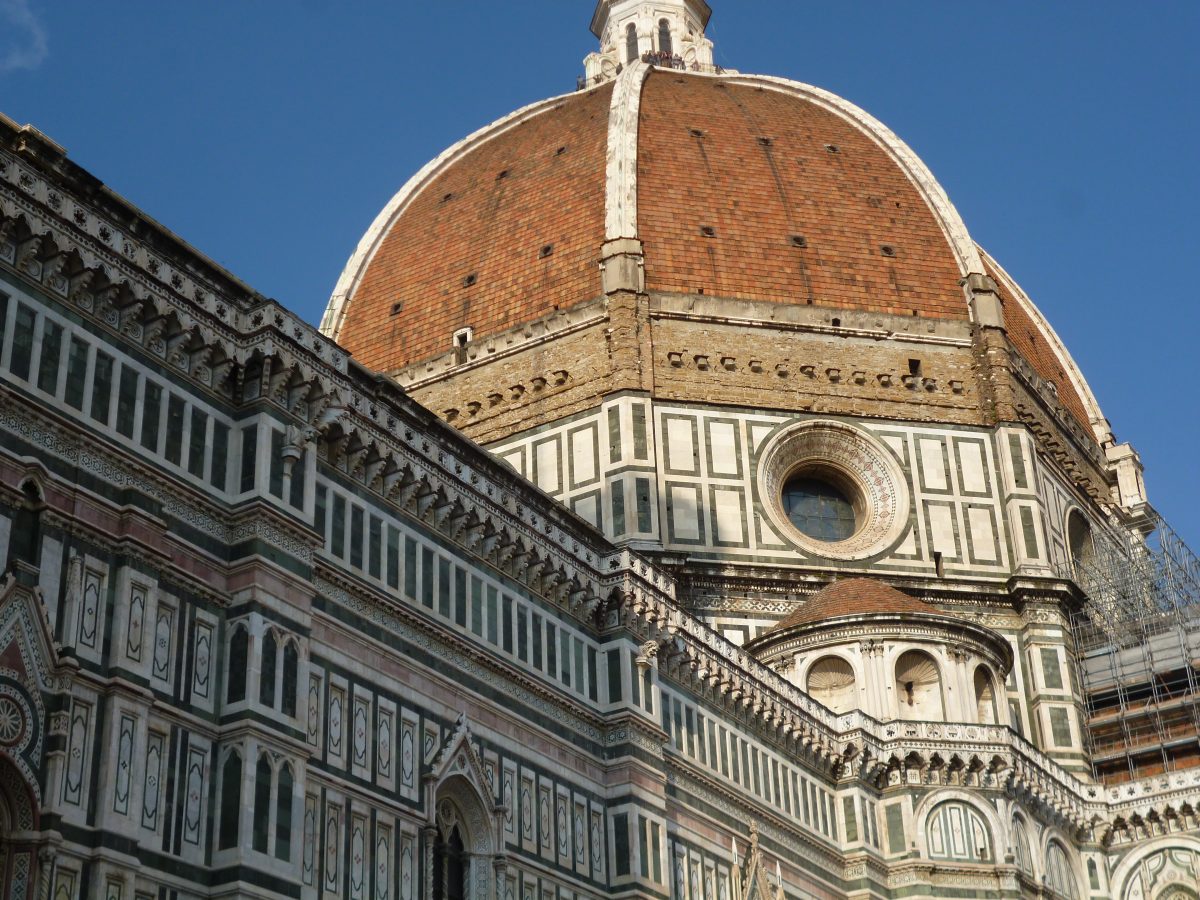Last Updated on March 5, 2023 by Ctybr67k
Florentines abroad who are missing their home city are not said to be ‘homesick’, but rather ‘sick for the dome’, so where else to begin our tour of Florence, but inside the Duomo? Known in English as Florence Cathedral, it is the symbol of the city and the first place most visitors head for. Perhaps the loveliest description of it was by Betty Burroughs, written in 1960: ‘it rises above Florence like a benediction.’
building the duomo
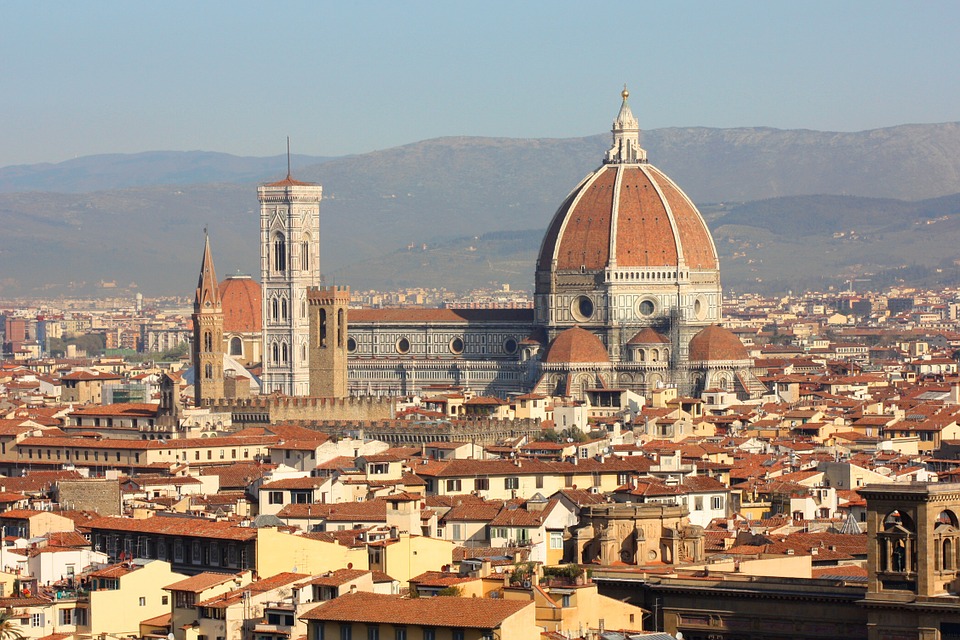
13th century Florentines thought big. They wanted their new cathedral to surpass anything built by the Greeks or the Romans and hundreds of workers were engaged in 1296 to make that happen. The poet Dante described sitting nearby and watching in fascination as the cathedral took shape. But he died in 1321, so didn’t live to see it finished because the work was not completed until 1472. The dome, designed by Filippo Brunelleschi despite the fact that everyone said it was impossible, is the most striking part of the building.
Brunelleschi learned about architecture by travelling to Rome, where he drew all the city’s temples, basilicas, aqueducts and amphitheatres until he understood how they were designed. Returning to Florence in 1407, he tricked his way through a competition to win the commission for the dome. No-one else could make an egg stand upright on a flat surface, but Brunelleschi dented it and succeeded. When challenged that ‘anyone could have done that’, he retorted ‘Yes, but only I thought of it.’ When asked to work with another architect, Lorenzo Ghiberti, Brunelleschi feigned illness until his rival was forced to admit he couldn’t do the work alone. ‘Well, I could do very well without him’, he replied. The commission was his alone.
what to see inside the duomo

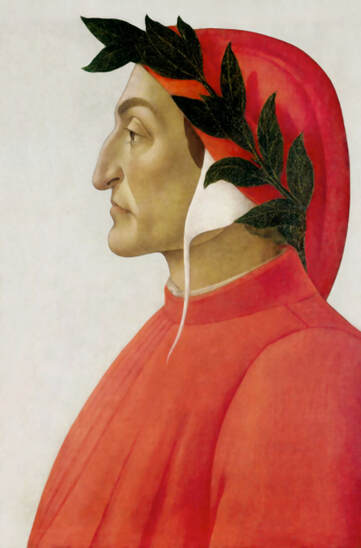
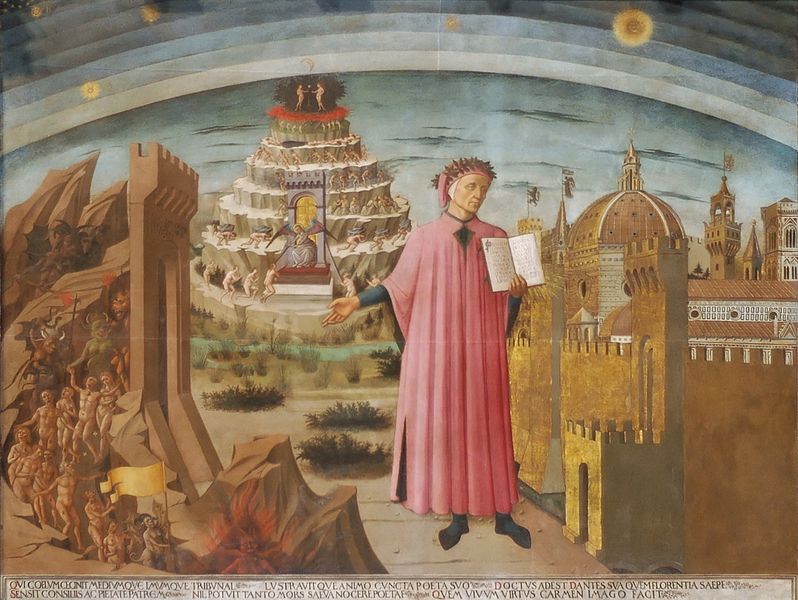
If you are up to the 463 steps, winding up the inside of the cathedral dome, then your reward will be splendid views of the city. Inside the building itself, enjoy the mosaic flooring, the clock at the entrance, made in the 15th century and still working, and the artwork, such as Giorgio Vasari’s frescos of The Last Judgment, painted in the 1570s by Vasari himself and a team of his apprentices.
One especially interesting painting is Domenico de Michelino’s ‘Dante explaining the Divine Comedy’, on the cathedral’s left hand wall, towards the front. It depicts Dante, dressed in a red robe and wearing a laurel wreath, narrating his Divine Comedy. He is standing in front of the story’s three main settings: hell, purgatory and heaven. Above the flames of hell stand the words ‘Abandon hope, all ye who enter here’, then a winding path leads over a mountain representing purgatory to heaven, shown as the city of Florence itself! The cathedral is easily visible, crowned by its dome, even though that was completed long after Dante’s death. But the picture sums up medieval Florence and one of its most famous citizens.
murder in the cathedral

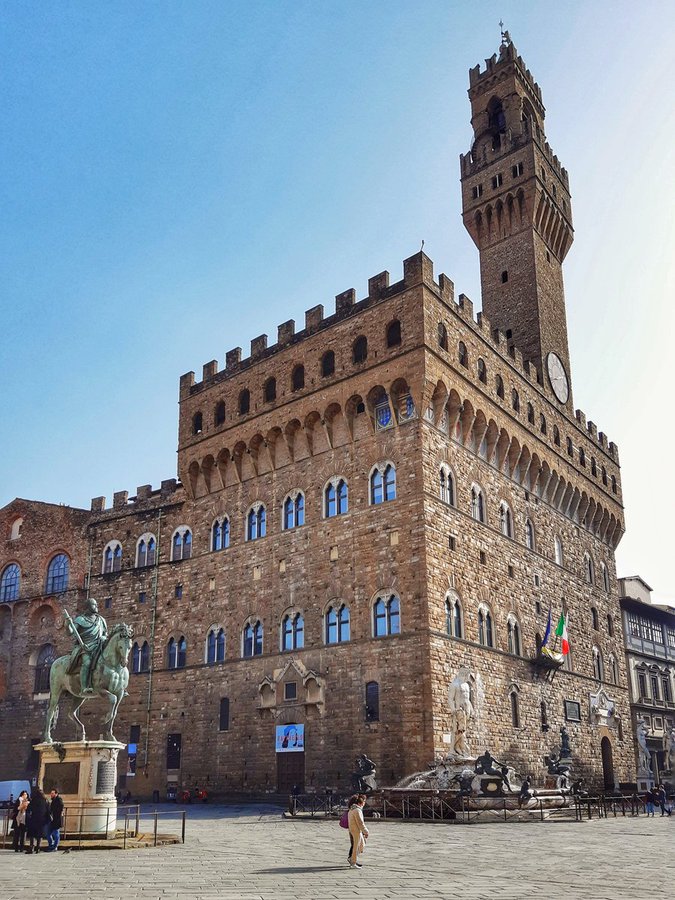
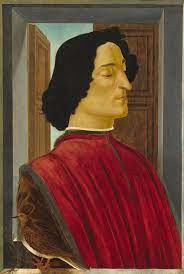
The most interesting thing about the duomo is not visible. It’s the shocking story of the murder of Giuliano di Medici and the attempted murder of his brother Lorenzo in front of the altar during mass on Easter Sunday in 1478. Stand in front of the altar and imagine the scene: just as the priest raises the bread for communion, men leap onto the two Medici brothers sitting right at the front and stab them both. Two priests leading the service pull daggers from under their robes and join in. Giuliano is killed instantly by a dagger plunged deep into his skull, but Lorenzo manages to escape by rushing into the sacristy and barring the heavy door behind him.
This was the dramatic conclusion to a tale of rivalry between two of Florence’s most powerful banking families. Members of the Pazzi family had planned the murder of two of their Medici arch-rivals in league with the priests at the service, knowing this was a moment when both Lorenzo and Giuliano di Medici would be present. Lorenzo, helped by the friends, escaped death by locking himself into the sacristy. The assassins were chased through the streets of the city, apprehended and hanged from the roof of the nearby Palazzo della Signoria. The priests too were hunted down and murdered. This violent story gives a picture of Florence in 1478, just six years after the duomo had been finally completed.
Listen to the POdcast
suggested Reading
The Lives of the Artists by Giorgio Vasari
link for this post
Previous episode Introduction to Florence
Next episode Exploring the area around Florence Cathedral

